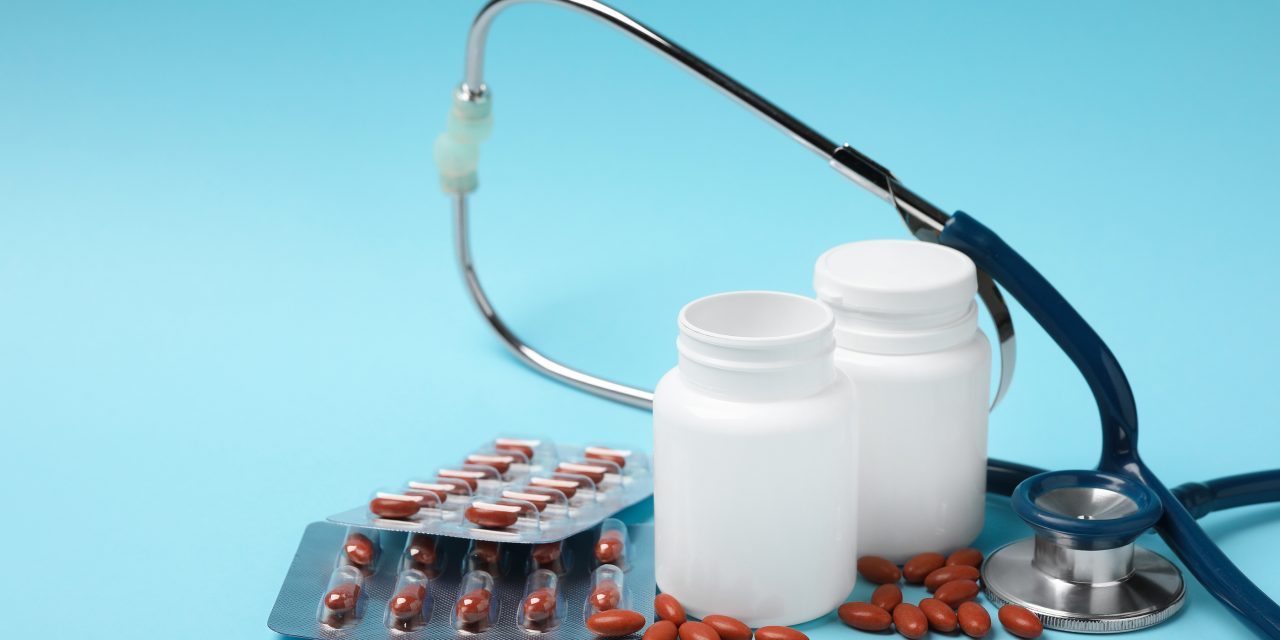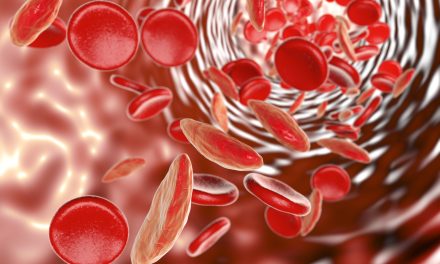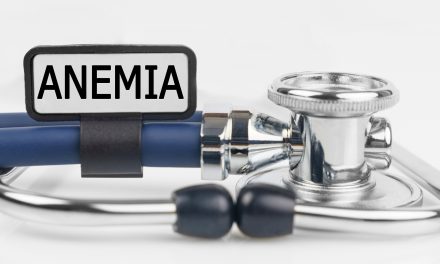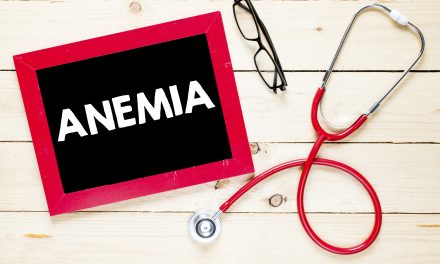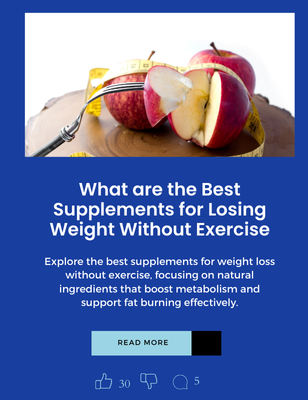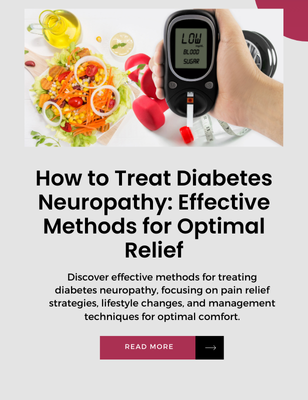Anemia is a condition characterized by a deficiency in the number of red blood cells or the amount of hemoglobin in the blood, leading to fatigue, weakness, and other health issues. Rapidly curing anemia depends largely on accurately diagnosing the type, cause, and severity of the condition. Effective treatment often involves a combination of dietary adjustments, supplements, and lifestyle changes tailored to address the specific needs of the individual.
To swiftly address anemia, iron supplementation is generally considered a frontline treatment, especially in cases of iron-deficiency anemia. Ensuring adequate intake of key vitamins and minerals, such as vitamin C to aid iron absorption, and vitamin B12 and folate for proper red blood cell production, is crucial. In certain situations, medical interventions may be necessary, and it’s imperative to monitor progress and seek professional advice to optimize treatment outcomes.
Key Takeaways
- Tailored treatments based on diagnosis can expedite anemia recovery.
- Iron and specific vitamins are essential in treating anemia.
- Regular monitoring and professional advice ensure effective management.
Understanding Anemia
Anemia is a condition characterized by an insufficient number of red blood cells or a lack of hemoglobin in the blood. Hemoglobin is a protein in red cells that carries oxygen throughout the body. Without adequate hemoglobin, tissues and organs don’t receive enough oxygen, which can lead to a variety of symptoms.
There are several types of anemia, each with its own cause. They include:
- Iron-deficiency anemia: This is the most common type and is due to a shortage of iron in the body.
- Vitamin-deficiency anemia: A lack of vitamin B12 or folate can prevent the body from producing enough healthy red cells.
- Chronic disease anemia: Chronic conditions like cancer or HIV/AIDS can interfere with red blood cell production.
- Aplastic anemia: This rare, life-threatening anemia occurs when the body doesn’t produce enough red cells.
- Hemolytic anemia: This group of anemias develops when red blood cells are destroyed faster than they can be made.
Symptoms can be mild or severe and may include:
- Fatigue
- Weakness
- Pale or yellowish skin
- Irregular heartbeats
- Shortness of breath
- Dizziness or lightheadedness
To diagnose anemia, a doctor will likely order a complete blood count (CBC) to check levels of red blood cells and hemoglobin. Additional tests might be conducted to determine the underlying cause.
Treatment is tailored to the specific type of anemia and may involve dietary changes, supplements, medication, or procedures to address the deficiency or underlying condition. It’s crucial for individuals suspecting they have anemia to consult a healthcare professional for an accurate diagnosis and appropriate treatment plan.
Identifying Anemia Types
Anemia occurs when there are not enough healthy red blood cells to carry adequate oxygen to the body’s tissues. Different types of anemia have different causes and may require different approaches to treatment. It is essential to determine the type of anemia to address it effectively.
Common Types of Anemia
- Iron-Deficiency Anemia: The most prevalent form, caused by a shortage of iron in the body. It can result from poor diet, blood loss, or an inability to absorb iron.
- Vitamin-Deficiency Anemia: This occurs when the body lacks vitamin B12 or folate. It may stem from poor dietary intake or certain diseases affecting the absorption of these nutrients.
- Chronic Disease Anemia: Associated with chronic conditions like diabetes or cancer. The disease itself or its treatment can lead to a decrease in red blood cell production.
- Aplastic Anemia: A rare, but serious condition where the bone marrow does not produce sufficient new blood cells. Causes include autoimmune diseases, exposure to toxic chemicals or certain medications.
- Hemolytic Anemia: In this form, red blood cells are destroyed faster than bone marrow can replace them, due to factors such as genetic conditions, certain diseases, or reactions to drugs.
Diagnosis
A healthcare provider will use various tests to identify anemia, including a complete blood count (CBC), to evaluate red blood cell count, hemoglobin and hematocrit levels. Iron tests, vitamin B12 and folate levels, and tests for bilirubin help further identify the type of anemia. In certain cases, a bone marrow biopsy may be necessary to diagnose conditions like aplastic anemia. A specific diagnosis permits the selection of an appropriate treatment plan.
Nutritional Adjustments
To address anemia, individuals should focus on consuming foods rich in iron, vitamin B12, folate, and vitamin C. These nutrients are crucial for producing healthy red blood cells.
Iron can be found in:
- Red meat (highest concentration in beef and lamb)
- Poultry (chicken, turkey)
- Seafood (oysters, clams, tuna)
- Beans
- Dark green leafy vegetables (spinach, kale)
- Dried fruit (apricots, raisins)
Iron from plant sources is better absorbed when paired with vitamin-C-rich foods such as:
- Citrus fruits (oranges, grapefruits)
- Strawberries
- Tomatoes
- Bell peppers
Vitamin B12 is vital and mainly present in animal products. Excellent sources include:
- Dairy products (milk, cheese, yogurt)
- Eggs
- Fish
Folate can be obtained from:
- Legumes (lentils, chickpeas)
- Nuts
- Whole grains
- Fortified cereals
Incorporating these foods into one’s diet may contribute significantly to the treatment and management of anemia. It is also advised for individuals to consider iron supplements if dietary changes are insufficient, but only after consulting with a healthcare professional. Regular blood work is necessary to monitor progress and ensure that the body is responding to the dietary adjustments.
Iron Supplementation
Iron supplementation is an effective strategy for treating iron-deficiency anemia. Those with this condition typically have low levels of hemoglobin, a protein in red blood cells that carries oxygen. Supplements come in various forms, including tablets, capsules, and liquids.
Recommended Dosage:
The standard dosage for iron supplements varies based on age, gender, and specific health conditions. For adults, the usual dose is:
- Non-pregnant women: 60 mg to 120 mg daily
- Pregnant women: 30 mg to 60 mg daily
- Men: 60 mg to 120 mg daily
It’s important to consult a healthcare provider for personalized advice. Taking supplements with vitamin C can enhance iron absorption, while certain foods and medications may inhibit it.
Types of Iron Supplements:
- Ferrous Sulfate
- Ferrous Gluconate
- Ferrous Fumarate
- Carbonyl Iron
| Form | Characteristics |
|---|---|
| Ferrous Sulfate | Common and inexpensive; may cause stomach upset. |
| Ferrous Gluconate | Milder on the stomach; less elemental iron. |
| Ferrous Fumarate | Higher iron content; can be harsher on stomach. |
| Carbonyl Iron | Slowly absorbed; potentially safer in overdose. |
Patients should be mindful of potential side effects such as constipation, nausea, and abdominal discomfort. Stools may appear darker, which is typically harmless. Overuse can lead to iron toxicity, so one should never exceed the prescribed dosage without consulting a doctor. In severe cases, intravenous iron supplementation may be necessary. Regular monitoring of iron levels is crucial to adjust the dosage and avoid complications.
Vitamin and Mineral Intake
Anemia often results from deficiencies in specific vitamins and minerals that are crucial for red blood cell production and function. To combat anemia, one should prioritize the intake of iron, vitamin B12, folic acid, and vitamin C.
Iron is essential for hemoglobin production. Good sources include:
- Red meat
- Poultry
- Fish
- Beans
- Dark, leafy greens like spinach
- Iron-fortified cereals
It’s important to note that there are two types of iron—heme iron, found in animal products, and non-heme iron, found in plants. Heme iron is absorbed more efficiently by the body.
Vitamin B12 and folic acid are vital for red blood cell division. Deficiencies in these can lead to anemia. They are found in:
- Animal products (for vitamin B12)
- Leafy greens
- Legumes
- Citrus fruits
Due to its role in enhancing iron absorption, vitamin C is also beneficial. Sources of vitamin C include:
- Citrus fruits
- Berries
- Tomatoes
- Bell peppers
In some cases, oral supplements may be necessary to correct deficits. Supplements containing iron, vitamin B12, or folic acid should be taken under the guidance of a healthcare provider to avoid over-supplementation and to monitor progress.
Incorporating these nutrients into one’s diet can lead to an improvement in anemia. However, individuals should consult healthcare professionals for tailored advice and treatment plans, especially in the case of underlying health conditions contributing to anemia.
Herbal Remedies
Anemia is a condition where the body lacks enough healthy red blood cells to carry adequate oxygen to the tissues. Various herbal remedies are suggested to support the management of anemia, though they should be used in consultation with a healthcare provider.
Nettle Leaf: Nettle leaf is high in iron, making it beneficial for iron deficiency anemia. It can be consumed as a tea or added to foods.
Dandelion: Dandelion root and leaves are sources of vitamins and iron. These can be integrated into the diet as a tea or in salads.
Yellow Dock: Yellow dock is believed to help with anemia as it may aid in iron absorption. It is typically taken in tincture or capsule form.
Herbal Iron Formulae: There are herbal supplements that combine various ingredients such as nettle, dandelion, and yellow dock, formulated specifically to address iron deficiency.
Suggested Herbal Regimen
| Herb | Form | Suggested Use |
|---|---|---|
| Nettle Leaf | Tea | 1-3 cups daily |
| Dandelion | Tea/Salad | 1-2 cups daily as tea or 1 cup as salad |
| Yellow Dock | Tincture | Follow label instructions |
Herbs should be used responsibly and with awareness of potential interactions with other medications. It’s important to consult a healthcare provider before starting any herbal remedy for anemia.
Lifestyle Changes
An individual seeking to address anemia can benefit from several lifestyle adjustments. The following changes may assist in improving iron levels and overall blood health:
- Dietary Adjustments: Consuming iron-rich foods is crucial. They should include:
- Red meat, poultry, and fish
- Leafy green vegetables like spinach and kale
- Iron-fortified cereals and bread
- Beans, lentils, and tofu
- Nuts and seeds
- Vitamin C Intake: Vitamin C enhances iron absorption. They should strive to pair iron-rich foods with sources of Vitamin C like oranges, strawberries, and bell peppers.
- Cooking Methods: Using cast iron cookware can also increase the iron content of food.
- Avoiding Iron Blockers: Certain substances can inhibit iron absorption, including:
- Calcium-rich foods and supplements
- Caffeine and some herbal teas
- High-fiber foods, which should be moderated rather than avoided entirely
- Physical Activity: Regular moderate exercise can improve health, though individuals should consult with a healthcare provider before starting any new exercise regimen, particularly if anemia is severe.
- Alcohol and Tobacco: Limiting alcohol consumption and avoiding tobacco can aid in the management of anemia, as these substances can negatively affect blood production.
Consistency in these lifestyle changes is key. They should not expect immediate results and understanding that improvement may take time is important. Regular consultations with healthcare professionals will ensure these changes are effective and safe.
Medical Treatments
The management of anemia typically involves addressing its underlying cause. For iron deficiency anemia, oral iron supplements are commonly prescribed. Patients are advised to take iron with a source of vitamin C to enhance absorption.
In more severe cases, or when oral supplements are not effective, intravenous iron therapy may be administered. This method delivers iron directly into the bloodstream, offering a faster response than oral supplements.
For anemia due to chronic diseases, doctors may prescribe medications such as erythropoiesis-stimulating agents (ESAs), which encourage the bone marrow to produce more red blood cells. However, these are used carefully to avoid potential side effects.
When anemia is caused by a deficiency of vitamin B12 or folate, treatment includes dietary adjustments and supplementation. If the body cannot absorb vitamin B12, regular injections are required.
In acute cases where anemia poses an immediate risk, a blood transfusion may be necessary. This quickly increases red blood cell counts but is typically reserved for severe or life-threatening situations.
Table: Common Anemia Medications and Their Use
| Medication Type | Use Case |
|---|---|
| Oral Iron Supplements | Iron Deficiency Anemia |
| Intravenous Iron Therapy | Severe Iron Deficiency Anemia |
| Erythropoiesis-stimulating Agents | Anemia due to Chronic Diseases |
| Vitamin B12 Injections | Vitamin B12 Absorption Disorders |
| Blood Transfusions | Acute and Severe Anemia |
Patients must follow their healthcare provider’s guidance to ensure the correct treatment plan is used for their specific type of anemia. Monitoring progress with regular blood tests is crucial to assess the effectiveness of the treatment and make any necessary adjustments.
Monitoring Progress
When managing anemia, one can track their progress through routine blood tests. These tests primarily focus on hemoglobin levels and red blood cell counts. Effective monitoring involves a series of scheduled tests:
- Initial Baseline: Establishing a baseline before starting treatment is essential.
- Follow-Up Checks: Regular follow-ups should be done, typically every few weeks, to assess the improvement of blood values.
Progress can also be assessed by monitoring symptoms. Persistent or worsening symptoms may indicate the need for a treatment reassessment.
| Timeline | Test Type | Purpose |
|---|---|---|
| Before treatment | Complete Blood Count (CBC) | To establish baseline hemoglobin and RBC levels |
| 2-4 Weeks | CBC | To monitor early response to therapy |
| Every 1-3 Months | CBC | To ensure continuing response and stabilization |
Patients should be aware of their own physical signs of progression. Improvements may include:
- Increased Energy: Less fatigue and more stamina.
- Improved Concentration: Enhanced mental clarity.
- Color Return: Less pallor, especially of the gums, nail beds, and eyelids.
Dietary intake should be recorded to ensure adequate iron and vitamin consumption. Apps or food diaries can be beneficial for this purpose.
One should be attentive to the frequency of monitoring, as individual needs may vary depending on the type and severity of anemia. It’s recommended to consult with a healthcare provider to personalize the monitoring schedule.
When to See a Doctor
Individuals should schedule a visit with a healthcare provider if they experience symptoms that could signal anemia. These symptoms often include:
- Persistent fatigue
- Shortness of breath
- Rapid heartbeat or palpitations
- Dizziness or fainting
- Pale skin, lips, or nailbeds
Moreover, if a person notes blood loss, such as from heavy menstrual bleeding or blood in the stool, medical attention is crucial. This could indicate underlying conditions contributing to anemia.
Importantly, one should not self-diagnose or start iron supplementation without medical advice, as excessive iron can be harmful.
At-Risk Populations:
Certain individuals are at a higher risk for anemia and should maintain regular check-ups:
- Pregnant women
- Individuals with a history of anemia
- Those with chronic diseases (e.g., kidney disease)
- People following a restricted diet
Children and Anemia:
It’s especially important for parents to watch for potential signs of anemia in their children, who may not articulate their symptoms, like:
- Unusual irritability
- Slow growth and development
- Appetite loss
Action Plan Table:
| Symptom | Immediate Action |
|---|---|
| Severe weakness or fatigue | Contact a healthcare provider immediately |
| Blood in stool or urine | Seek urgent medical attention |
| Chest pain or pressure | Go to the emergency room |
Follow-up is essential for anyone diagnosed with anemia to monitor response to treatment and adjust as necessary. Early intervention can prevent complications associated with untreated anemia and lead to a more rapid recovery.
Frequently Asked Questions
To effectively manage and treat anemia, specific dietary adjustments and the use of supplements can be crucial. The following frequently asked questions address common concerns and provide clear guidance for those looking to alleviate anemia symptoms.
What are effective dietary changes to treat anemia?
Introducing more iron, vitamin B12, and folate-rich foods into one’s diet can help treat anemia. Consuming these nutrients in combination with vitamin C to enhance iron absorption is often suggested by health professionals.
Which iron-rich foods can help combat anemia symptoms?
Foods high in iron such as red meat, poultry, seafood, beans, dark leafy green vegetables, and iron-fortified cereals can be beneficial. Including these foods in daily meals can help increase iron levels and alleviate anemia symptoms.
What is the fastest way to increase hemoglobin for an anemic patient?
For rapid increase in hemoglobin, a diet rich in iron and vitamins, alongside iron supplements, can be effective when taken under medical supervision. Intravenous iron therapy may be prescribed in severe cases.
Are there any quick-acting iron supplements recommended for anemia?
Oral iron supplements, like ferrous sulfate, ferrous gluconate, or ferrous fumarate, are commonly recommended. They’re most effective when taken on an empty stomach or with vitamin C to enhance absorption.
What beverages are beneficial for individuals suffering from anemia?
Drinking beverages high in vitamin C, such as orange juice, or fortified with iron can aid in the absorption of dietary iron. Tea and coffee, which can hinder iron absorption, should be limited.
How long typically does it take to recover from anemia with proper treatment?
The time frame for recovery from anemia varies depending on the underlying cause and the treatment regimen. Improvements in symptoms can often be seen within a few weeks, but it may take months for hemoglobin levels to return to normal.
Conclusion
In conclusion, addressing anemia requires a multi-faceted approach for rapid improvement. This includes consuming iron-rich foods, incorporating iron supplements as recommended, and seeking medical advice to address any underlying health issues contributing to anemia. By following a personalized treatment plan and working closely with healthcare professionals, individuals can effectively and rapidly improve their iron levels and overall well-being.

